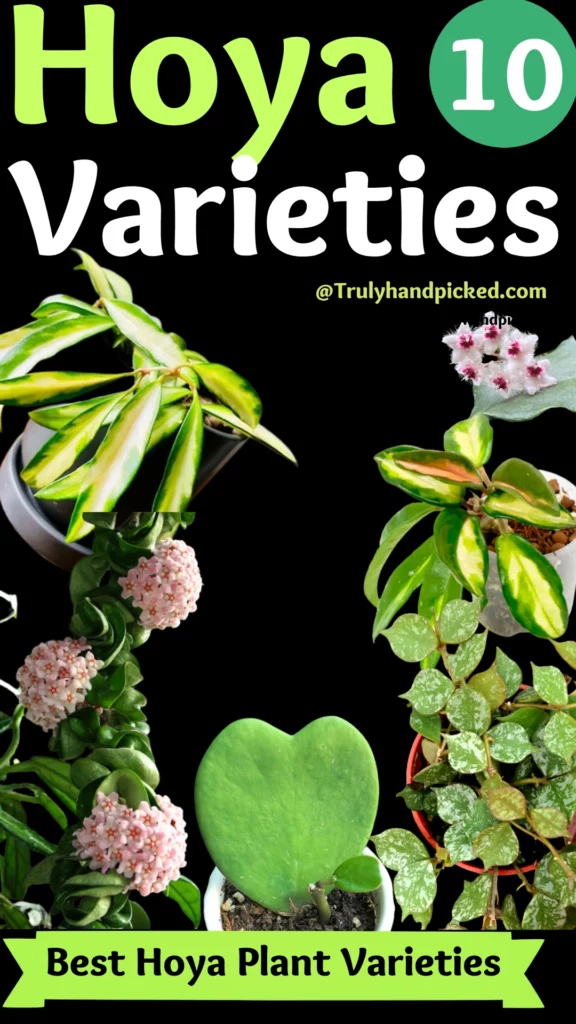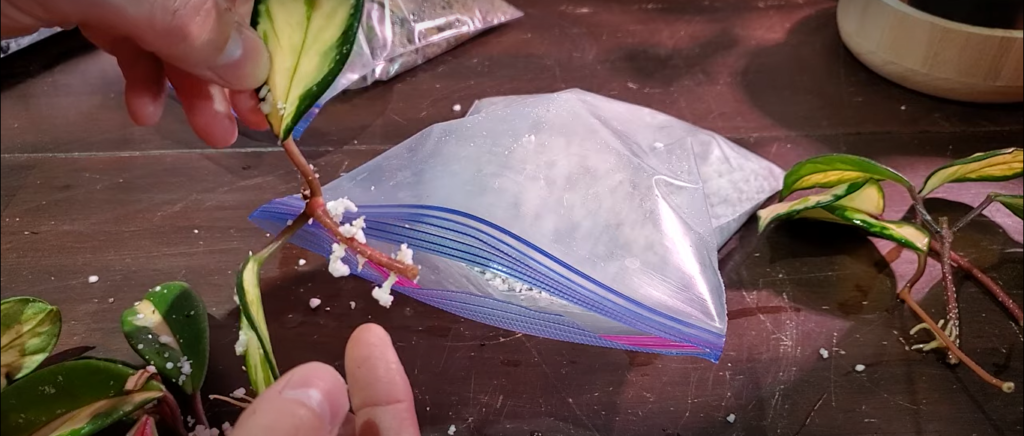Despite being an easy-to-care plant, you should be picky about some particular species of hoya; especially, when you are growing it indoors. Hoyas belong to the milkweed or Apocynaceae family. Different varieties demand different types of caring methods.
However, hopefully, there are some species too, which respond with the common growing essentialities, which are preferred for the wax plant of the milkweed family. Here are the best 10 varieties of such variations, which are compatible with normal hoya growing conditions-
Top Hoya Plant Varieties
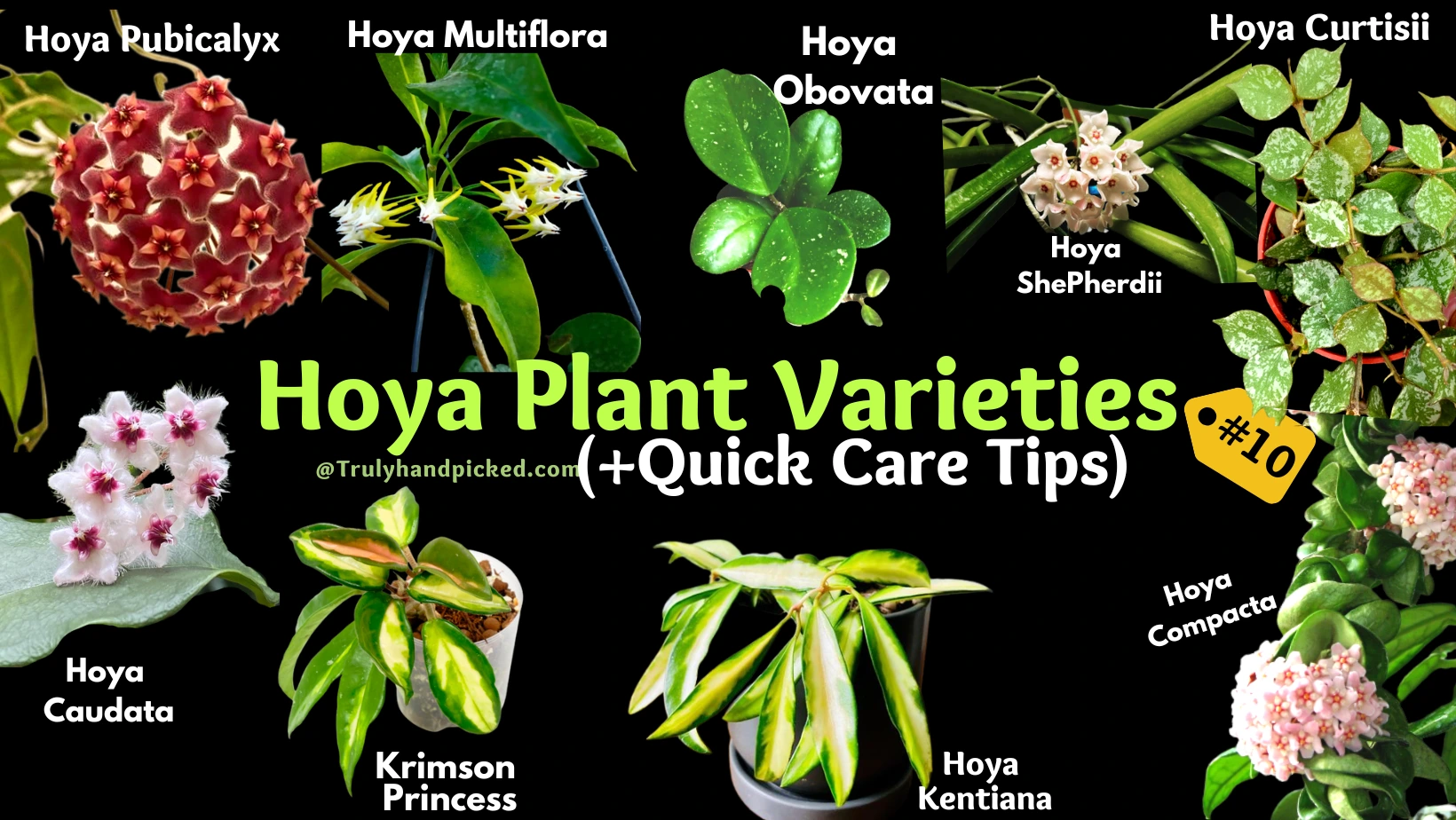
Hoya Pubicalyx:
This is one of the most quick-grower hoya varieties with long-lasting flowers. Leaves of this category grow with a narrow shape in a deep green shade over vining stems. Use a climber to give proper support to its creeping vines.
Hoya curtisii:
Hoya curtisii is another nice species of hoya plant with trailing vines. Plants produce tiny to medium size leaves over vining stems in small spade-like shapes. This is one of the rarest hoya genera with pale green foliage.
Hoya Kentiana:
This variety of hoya species is most famous for its classy foliage. leaves of this plant grow in a narrow-lace shape with a waxy top layer. The shade of the foliage is deep-dark green with even darker edges. Pick this category for its sweet aromatic blossoms apart from its catchy leaves.
Krimson princess:
This category of hoya includes plenty of other variations of wax plants in it. Krimson princess, Krimson queen, etc. are some of the common ones of this category. You can go with this variety for its bushy green foliage with buoyant green shade. This species is best for a vertical garden area.
Hoya Compacta:
It is a good variety of hoya plants with variegated quality. It produces crinkly leaves that look gorgeous while fully grown in bright green. This is one slow-grower species of the hoya plant. So, pick this one, if you have enough patience, to let it thrive fully and get a handful of flowers at the end of the flowering seasons.
Hoya Multiflora:
This is an exclusive hoya species due to its unique-looking foliage and amazing blooms. The leaves of this hoya plant are succulent but form in a thinner shape than usual succulent leaves. Plants bloom blossoms with stalks in ivory to pale yellow shade. It is a thirsty hoya species among the other equivalents.
Hoya ShePherdii:
It would be best for the hoya species to grow indoors, as the hoya shepherd is a complete space-saver. Its vining stems can thrive anywhere and everywhere but, usually don’t claim plenty of area due to its sleek leaves.
Foliage grows in thick and succulent form with free-blooming quality. If you don’t have enough time to care for your indoor succulents, pick this best easy-to-grow hoya variety with closed eyes.
Hoya Obovata:
If you are one of those, who pick hoya to its catchy flowers, then this would be the best pick for you. Hoya obovate probably produces the catchiest blossoms around stunning round-shaped succulent leaves. The deep green surface of foliage resembles more attractive with white or pinkish flecks. Plants take about 2 and a half years to bloom after the plantation.
Hoya Caudata:
Hoya Caudata is another easy-to-handle hoya species with exclusive foliage. It produces oval-shaped semi-succulent leaves over the vining stem.
The variegated foliage provides a maverick glance with light splotches over the dusky green surface. Blossoms of this species also hold a similar look to hoya obovata flowers with a red center around the white cluster.
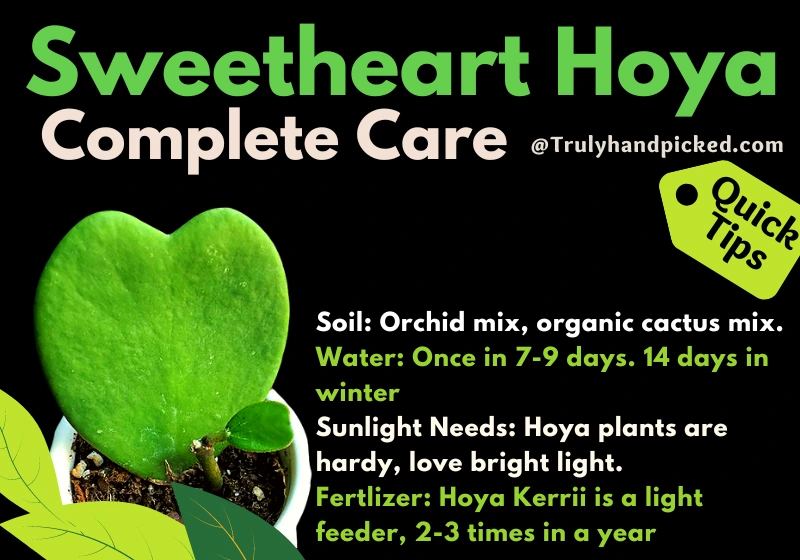
Due to its complete heart-shaped leaf, Hoya Kerrii is the species known as sweetheart hoya or valentine hoya. It is a delight while grown in a house with a wide and bright succulent form.
Try to add a nod to this species to get plenty of glossy heart-shaped leaves on an individual plant from this single-leaf plant. Try to provide the light intensity flawless to keep the plant healthy enough.
How to Propagate Sweetheart Hoya:
You can propagate this beautiful succulent vine in three different ways, such as-
Propagation Through Stem Cutting:
- Wait till the period of spring or summer to cut a healthy stem from your plant
- Cut off a stem about 4-5 inches long with 2-3 leaves on it
- After completing the trimming process, pluck off the leaves from the lower part of the stem
- Dip the end part of the cutting into a powdered rooting hormone and plant it in a pot
- To plant it, prepare a planter with preferred potting soil that is suitable for hoya kerrii
- The potting mix should have perlite, vermiculite, and organic compost in proper amounts
- Sow the cutting into the soil securely and water it adequately
- Make sure the water is draining well and place the planter in a perfectly warm place to give it a normal thriving climate.
Rooting hoya in different mediums -> Youtube
Propagation Through Leaf:
- To practice this process, find a big and lush leaf from your parent plant first
- One-leaf hoya is the best pick for this kind of propagation method
- Now, cut the leaf from the middle using a sterilized cutter and plant it directly into the soil
- Water the soil with a sprayer thoroughly and place it in a warm but highly humid spot
- Make sure you use perfect potting soil with the best draining quality for this process
- Wait almost 5-6 weeks to let the root of build into the soil out of a leaf-cutting
- Have patience and provide the rooted leaf with proper caring methods accordingly. You will find that new leaves propagate soon from the top, once the root would establish well into the soil.
Propagating hoya with leaves in a sand pot -> Youtube
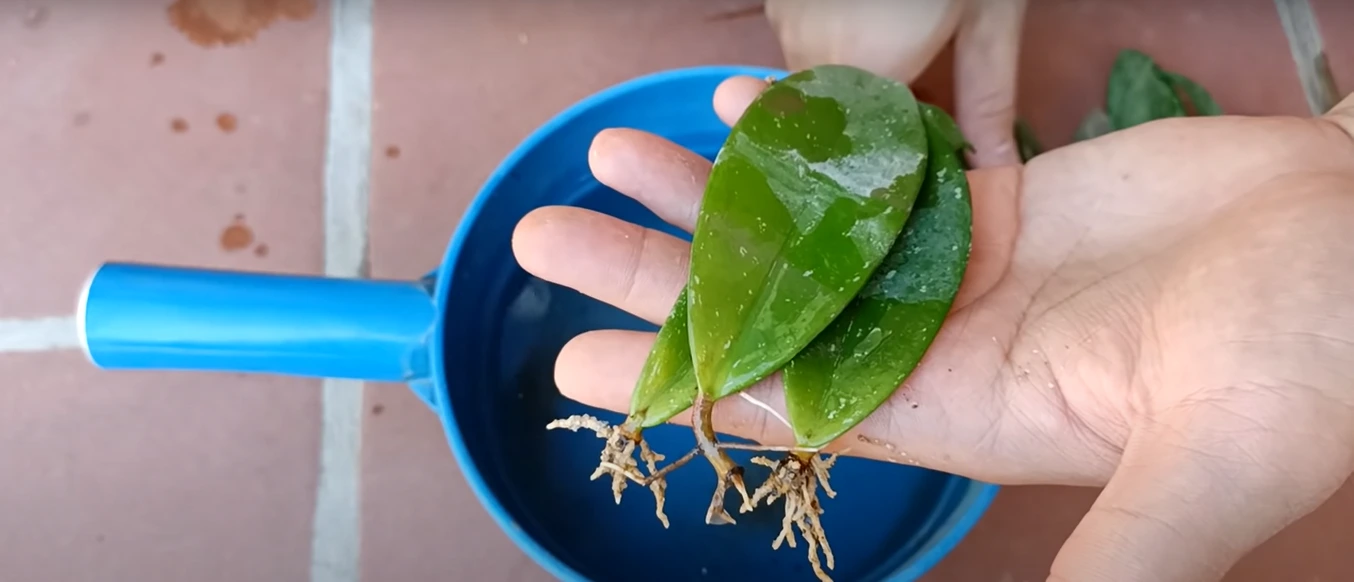
Propagation Through Vine:
- To let the cutting regrow through the vine, you need to propagate it in water
- Simply cut off a leaf with 2-inch of the vine with one to two open nods for this process
- After trimming it off, place the cutting into a glass of distilled water
- Make sure the bottom submerges in the water, but the leaf stays above the water level
- Change the water often, whenever you find it becomes gloomy or murky
- You will find that the cutting start producing roots within a couple of weeks
- Wait till the new roots grow 1-2 inches long, and then, replant it in a planter with orchid potting mix.
